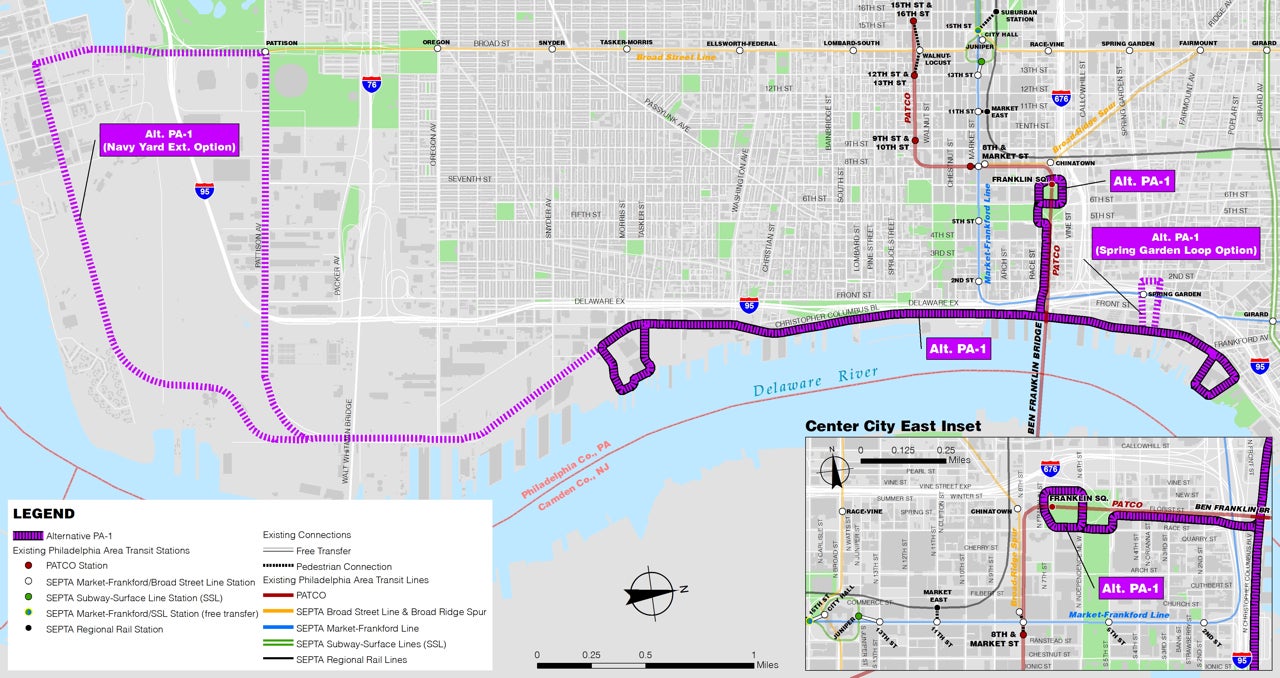Franklin Square options

The Franklin Square PATCO station is due for an upgrade.
Lying below one of Philadelphia’s five original squares, the 1930s green and white tiles lining the walls are covered in a thick layer of dirt. The glass is missing from partitions separating the fare-collection area from the station’s platforms. Next to an alcove with exposed wires that housed the station’s vending machines are three signs — in English, Spanish and French — that list fares. The most expensive: $1.75.
The station, which last saw riders in 1979, is due to reopen about the end of next year. The Delaware River Port Authority hopes that the area around the station, which has seen economic growth in recent years and boasts attractions like the National Constitution Center, will be a draw for South Jersey commuters and families.
PATCO general manager Bob Box, on a tour of the station, pointed out key parts of the renovation to reporters.
Though the 1930s-era tile will stay, it will get a thorough cleaning. And the orange cladding, dating from the ’70s, that covers the support columns will be replaced with stainless-steal coverings. The platforms, now a gray concrete, will be cleaned and sealed, and lighting will be improved.
Behind that, Box sketched out two different visions for the stations.
One, a low-cost option, would feature a bare staircase leading down to the station, replacing the concrete block covering the entrance on the corner of 7th and Race streets. Passengers would pay their fares in the main concourse underground.
The other, higher-cost, plan would feature a 2,000-square-foot headhouse located toward the center of the square. Fares would be collected above ground, and passengers would have the entire concourse on which to wait for trains.
This also has the advantage, Box said, of securing the station, as only riders who had paid their fares could enter the station proper.
Both options would include elevator access, which is mandated under the Americans with Disabilities Act.
To address security concerns, DRPA is considering closing the station late at night, as it does with two other Philadelphia stations.
DRPA is also considering whether to open a closed staircase across Arch Street. Though the staircase would allow riders access to the station without crossing a busy street, the “long, narrow tunnel” which connects to entrance to the main part of the station presents some security obstacles, Box said. If the staircase is opened, fares would probably be collected at an underground landing along the tunnel leading to the main concourse.
A consulting firm is conducting an analysis of both plans, Box said, and it’s still unclear how much each option would cost.
DRPA expects about 500 riders a day to use the station initially, Box said, adding that the agency hopes the station will increase the number of riders who use the system for intracity trips.
Though the station has been closed several times before due to low ridership, Box said that the agency plans to keep the station open this time around — even if the station experiences low ridership.
“It’s being done to help economic development in the area,” he explained.
The agency expects the Franklin Square station to increase headways by 45 seconds to a minute.
Speaking to reporters, Box also seemed to indicate that DRPA is leaning against using the station as part of a light-rail line the agency is planning along the Delaware River.
Though two of three plans DRPA is considering call for the line to begin at Franklin Square, where trains would then continue to Delaware Avenue — going north to Penn Treaty Park and south to Pier 70 — the agency is also considering a plan that would have trains run along Market Street. This option, in which trains would run above-ground from City Hall, down Market Street and to rail tracks along Delaware Avenue, has the highest projected ridership and better accomplishes the goal of connecting Center City to the waterfront, Box said.
Riders would be able to transfer at stations along Market Street to catch the Market-Frankford El. In the plans involving the Franklin Square Station, a transfer would be made at the El’s Spring Garden stop.
Box also said that DRPA is considering eventually expanding the line down to the sports complex and the navy yard.
Posted by Anthony Campisi
WHYY is your source for fact-based, in-depth journalism and information. As a nonprofit organization, we rely on financial support from readers like you. Please give today.



